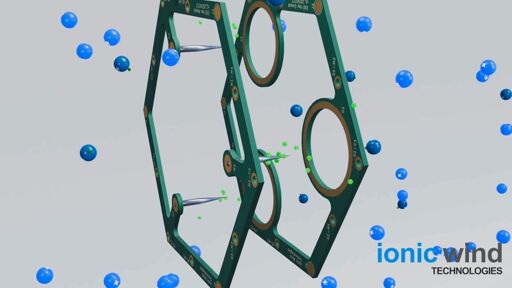A neat techology concept, but the drawbacks do seem rather severe:
While the technology looks interesting on paper, a number of practical challenges arise. First up, we are talking about relatively low airflow volumes compared to traditional fans. Secondly, there are particles in the air (dust, aerosols, etc.), and charged particles tend to attract each other with opposite charges or are attracted to surfaces that have an opposite (or grounded) charge. This greatly increases the risks of accelerated dust accumulation, and dust not only traps heat but can cause short circuits or corrosion of components. As high voltages are required to charge particles, they can create byproducts like ozone, and they can be harmful to electronic components, corroding metals, and degrading plastics or rubber over time.
And the static pressure is close to zero resulting in poor performance from heatsinks that are not in the immediate vicinity of the accelerator.



